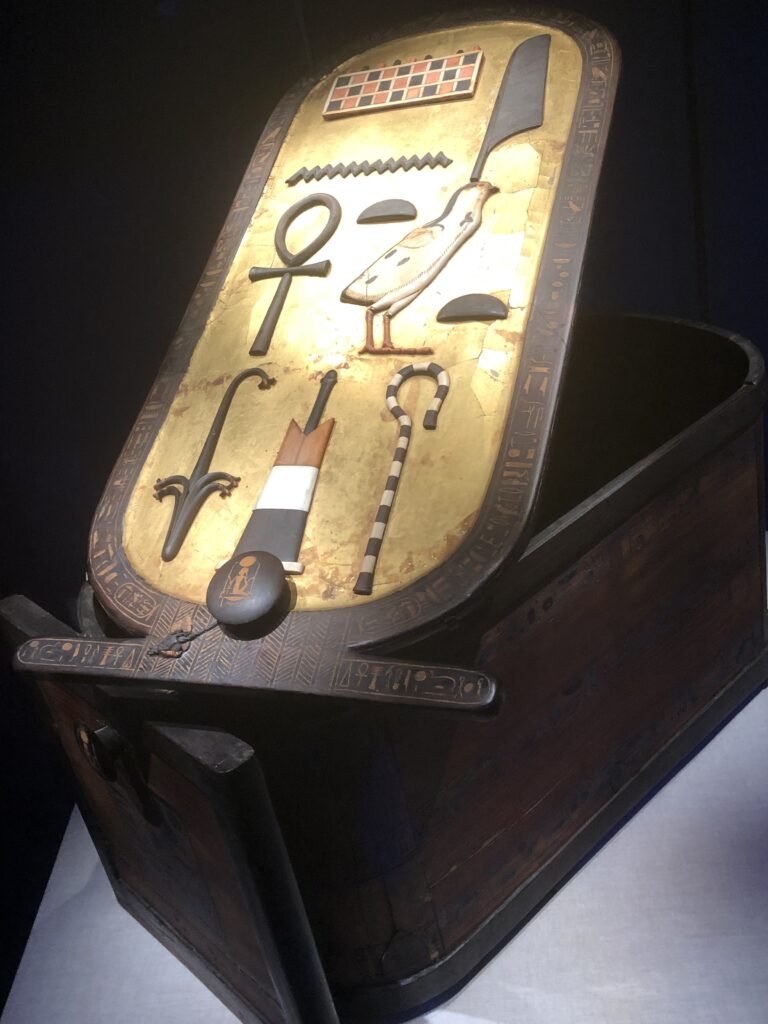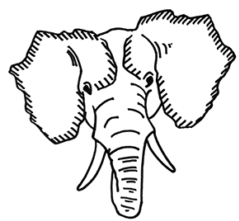
I visited the Tutankhamun exhibition at the Saatchi Gallery.
This is the cartouche for Tutankhamun on the lid of a box found in his burial chamber. I’d always thought that a cartouche was a mappy thing but originally it was
“an oval with a line at one end at right angles to the oval, indicating that the text enclosed is a royal name. The first examples of the cartouche are associated with Pharoahs at the end of the 3rd Dynasty, but the feature did not come into common use until the beginning of the 4th Dynasty.
https://en.wikipedia.org/wiki/Cartouche
Happy cartouches are much more recent
“Cartouches are the elaborate decorations that frame map titles and other information about the map. They add an artistic or symbolic narrative to the maps they describe. According to map historian Edward Lynam, cartouches that frame titles first appear on Italian maps in the 16th century. They persist on maps until the middle of the 19th century, going through many stylistic changes.
The cartouche styles are remarkable for their diversity, symbolism, social commentary, and artistic beauty. Many of the cartouches appear to have iconographic meanings that may be lost to us today. Others are just wildly ornate, attempting to give the map they introduce a more arresting aspect.”
https://www.davidrumsey.com/blog/2010/2/25/cartouches-decorative-map-titles





